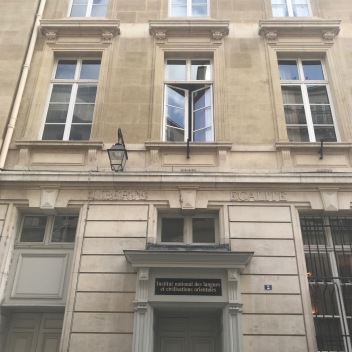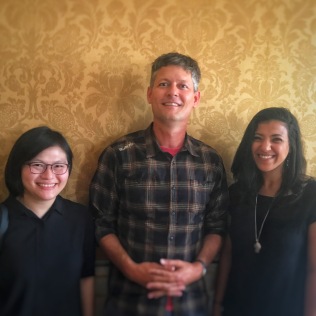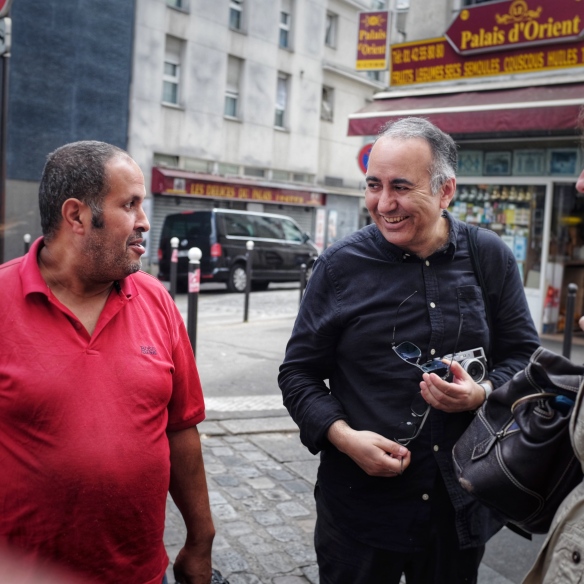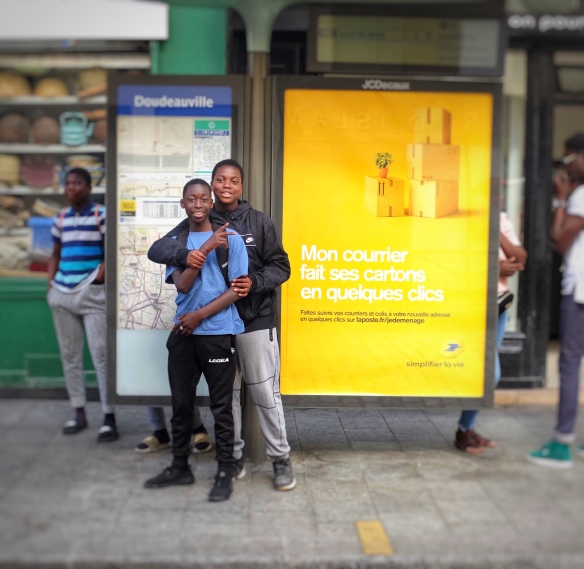Hi all,
Early this spring I received an invitation to participate in a small international conference at INALCO — the Institut National des Langues et Civilizations Orientales in

INALCO, Paris
Paris, France. The small conference, entitled Migrants in the Globalising City: Spaces, Places and Mobilities in Asia, Europe and the Middle East, was organized by a group of scholars working with CERMOM in Paris and the Asia Research Institute at the National University of Singapore — scholars including Delphine Pagès-El Karoui (INALCO), Brenda Yeoh (NUS), and Michiel Baas (NUS). The result was a fascinating set of papers that explored migrants’ experiences in the landscape of diverse global cities.
Thomas Maloutas and Stavros Spyrellis described the Athens Social Atlas, and then focused more precisely on how the influx of migrants and newcomers into urban Athens resulted in a vertical segregation, whereby the upper floors of buildings were held and maintained by established Greek citizens, while the lower floors were occupied by new arrivals and more itinerant and marginalized migrant populations. Yasser Elsheshtawy (who visited Puget Sound last semester) and Delphine Pagès-El Karoui revealed their efforts to provide us with the first map of segregation in the sprawling urban landscape of Dubai. Laavanya Kathiravelu (Nanyang Technological University) compared the integration of migrants in Singapore and Dubai, revealing the varying conceptualizations of ethnicity woven into the way citizenship is constructed in each of these global cities. Numerous other papers were equally fascinating.

Interstitial space in the suburban landscape of Doha, Qatar
In my own paper, I sought to articulate the concept of interstitial space, a concept I’ve been kicking around for almost a decade. In addition to simply describing this type of liminal urban space, I sought to trace its prevalence in the city, to gauge some of the historical and ideological forces that produce these in-between spaces in the landscape of the city, and to demonstrate how important this interstitial space is to the marginal components of urban society. The urban constituencies who depend on these liminal spaces include the homeless population here in Tacoma, and migrant populations in worlding cities like Doha, Qatar.

With Karen Liao (left) and Nevyne Zeineldine (right)
I was also asked by the conference organizers to evaluate and discuss two PhD candidates research progress and plans based on their preliminary fieldwork. This was a particularly energizing task. Karen Liao (NUS) has configured a project to examine and explore how architect-migrants returning to Manila both experience and reshape the city. While scholars (including those present at this workshop) have begun to think about how migrants are shaping and experiences cities, Karen presciently wants to grapple with how return-migrants interact with the cities that they departed earlier in life, and to which they often return near the end of their working life. And PhD Candidate Nevyne Zeineldine (Paris Descartes) has just returned from several months in Bahrain, where she’s grappling with how artists and the art scene there have interacted with the social movements that arose in the Arab Spring — social movements that remain somewhat active amidst the social frictions on the island. Both of these projects seem enormously promising, and I look forward to seeing their results.

“Little India” in Paris
The second day of our conference concluded at midday, and the Parisian organizers then took us on a walking tour of several of the migrant-dense neighborhoods of Paris. This was the highlight of my stay. We commenced near Gare Nord, in the neighborhood known as “Little India,” although the strong Tamilian presence there includes many of Sri Lankan ancestry. We proceeded up the hill into Goutte d’Or, where North African and Middle Eastern migrants have established a diasporic footprint in the city. We concluded by walking through the bustling street markets of Boulevard Barbès, where the African and Caribbean imprint on the city is strongest. Later that night, France beat Belgium in the World Cup semifinals, and the streets of Paris erupted in jubilation.
Andrew

Yasser Elsheshtawy (right) in conversation with a neighborhood resident in Goutte d’Or

Boys horsing around near Boulevard Barbés in Paris

“Little India” in Paris

Pingback: An Overview of Our Recent Trip to Doha, Qatar | SOAN